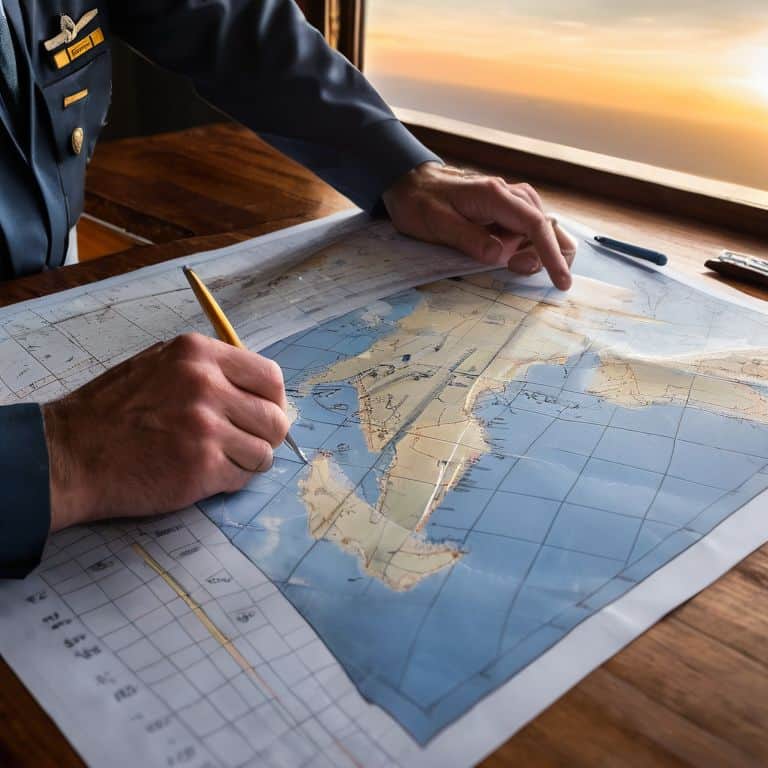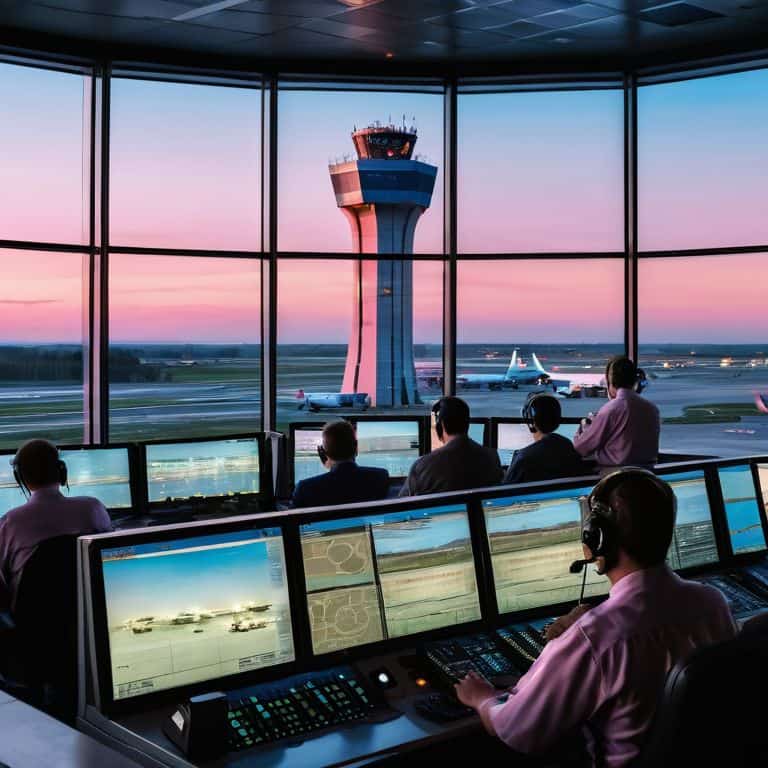I still remember my first flight as a bush pilot in Alaska, navigating through dense clouds and unpredictable winds. It was a sobering experience that taught me the importance of understanding a guide to aviation weather. Many pilots believe that mastering aviation weather is a complex and daunting task, but I’m here to tell you that it’s not as overwhelming as it seems. With the right approach and a solid foundation, anyone can learn to navigate the skies with confidence.
In this article, I’ll share my personal experience and expertise to provide you with a straightforward and practical guide to understanding aviation weather. You’ll learn how to read forecasts, identify potential hazards, and make informed decisions to ensure safe flight operations. My goal is to break down the fundamentals of aviation weather into simple, easy-to-follow steps, so you can focus on what matters most – flying safely and efficiently. By the end of this guide, you’ll have a clear understanding of the key principles and be able to apply them to your own flying experiences.
Table of Contents
- Guide Overview: What You'll Need
- Step-by-Step Instructions
- A Guide to Aviation Weather
- Navigating the Skies with Confidence: 5 Essential Tips for Understanding Aviation Weather
- Key Takeaways for Safe Flight
- Navigating the Skies with Confidence
- Conclusion: Mastering the Skies with Confidence
- Frequently Asked Questions
Guide Overview: What You'll Need

Total Time: 4 hours
Estimated Cost: $0 – $100
Difficulty Level: Intermediate
Tools Required
- Computer (with internet connection)
- Notebook (for taking notes)
- Pencil (for sketching weather patterns)
Supplies & Materials
- Aviation Weather Handbook (optional)
- Online Weather Resources (e.g., National Weather Service website)
- Map (for tracking weather systems, size: 24 inches x 36 inches)
Step-by-Step Instructions
- 1. First, let’s start with the basics: understanding the different types of clouds and their implications for flight. As a pilot, being able to identify clouds such as cumulus, stratus, and cirrus can help you predict potential weather patterns and make informed decisions about your flight plan. I like to think of it as navigating through a familiar airway, where knowing the signs and signals helps you stay on course.
- 2. Next, we need to discuss the importance of meteorological reports in aviation weather. These reports provide critical information about current weather conditions, including wind direction, speed, and precipitation. As a flight instructor, I always emphasize the need to stay up-to-date with the latest reports, as they can change rapidly and impact your flight plan. It’s like checking your in-flight navigation system to ensure you’re on the right path.
- 3. Now, let’s talk about wind shear, a phenomenon that can be particularly hazardous for pilots. Wind shear occurs when there is a sudden change in wind speed or direction, which can cause an aircraft to lose lift or experience turbulence. To avoid wind shear, it’s essential to monitor wind patterns closely and adjust your flight plan accordingly. I often use the analogy of flying through a narrow valley, where you need to be aware of the wind currents to navigate safely.
- 4. Another critical aspect of aviation weather is thunderstorm prediction. Thunderstorms can be dangerous for pilots, as they can produce strong turbulence, lightning, and heavy precipitation. To predict thunderstorms, you need to be aware of the instability of the atmosphere, which can be indicated by factors such as temperature, humidity, and wind direction. As a pilot, it’s essential to stay alert for signs of thunderstorm activity and take evasive action if necessary.
- 5. In addition to understanding clouds, wind, and thunderstorms, it’s also important to be familiar with icing conditions. Icing occurs when supercooled water droplets freeze onto the surface of an aircraft, which can cause a loss of lift and control. To avoid icing conditions, you need to be aware of the freezing level, which is the altitude at which the air temperature is below freezing. As a flight instructor, I always emphasize the need to check for icing conditions before flying and to take necessary precautions to avoid them.
- 6. Now, let’s discuss the role of weather forecasting models in aviation weather. These models use complex algorithms and data to predict future weather patterns, which can help pilots make informed decisions about their flight plans. As a pilot, it’s essential to understand the limitations of these models and to use them in conjunction with other weather information, such as meteorological reports and satellite imagery. I like to think of it as using a flight planning tool, where you need to consider multiple factors to make the best decision.
- 7. Finally, let’s talk about the importance of situational awareness in aviation weather. As a pilot, you need to be aware of your surroundings at all times, including the weather, air traffic, and your aircraft’s performance. To maintain situational awareness, it’s essential to stay focused and alert, using all available resources, including weather reports, navigation instruments, and visual observations. I often use the analogy of flying a scale model aircraft, where you need to be aware of the smallest details to navigate successfully.
A Guide to Aviation Weather

As we dive deeper into the world of aviation weather, it’s essential to understand the importance of pilot weather briefing tips. These tips can make all the difference in ensuring a safe and successful flight. One key aspect to focus on is understanding meteorological charts, which can provide valuable insights into upcoming weather patterns. By studying these charts, pilots can anticipate potential hazards and plan their route accordingly.
Another crucial tool in a pilot’s arsenal is aviation weather forecasting tools. These tools can help pilots predict weather patterns and make informed decisions about their flight plan. Additionally, severe weather avoidance strategies are vital in ensuring the safety of both the aircraft and its occupants. By staying informed about potential severe weather events, pilots can take necessary precautions to avoid them.
When it comes to navigating through unpredictable weather conditions, weather radar systems for aircraft can be a pilot’s best friend. These systems provide real-time data on weather patterns, allowing pilots to make quick decisions and adjust their course as needed. By combining this technology with a solid understanding of upper air weather patterns, pilots can stay one step ahead of the weather and ensure a smooth flight.
Pilot Weather Briefing Tips for Safe Skies
As we delve into the world of aviation weather, it’s essential to understand the importance of a thorough pilot weather briefing. This is where the magic happens, and you get to make informed decisions about your flight. I like to think of it as planning a hike – you need to know the terrain, the forecast, and any potential hazards before you set off. A good briefing will give you the lowdown on conditions, forecasts, and any warnings or advisories that might affect your flight.
When it comes to pilot weather briefing tips, I always emphasize the need to be methodical and thorough. Take your time, and don’t be afraid to ask questions. Review the latest forecasts, and consider factors like wind direction, turbulence, and visibility. By doing so, you’ll be well-prepared for a safe and successful flight.
Understanding Meteorological Charts for Smarter Flight
When it comes to navigating aviation weather, understanding meteorological charts is key. These charts provide a visual representation of weather patterns, allowing pilots to make informed decisions about their flight route. As a flight instructor, I always emphasize the importance of being able to read these charts correctly. It’s not just about understanding the symbols and colors used, but also about being able to interpret the data they present.
By studying meteorological charts, pilots can identify potential weather hazards such as fronts, low-pressure systems, and turbulence. This information can then be used to plan a safer, more efficient flight path. I like to think of it as mapping out a hiking trail – you want to know what terrain to expect and how to prepare for any obstacles along the way.
Navigating the Skies with Confidence: 5 Essential Tips for Understanding Aviation Weather

- Always start with a thorough pre-flight briefing to understand the current and forecasted weather conditions along your flight route
- Learn to read and interpret meteorological charts, including surface analysis, upper air charts, and forecast charts, to anticipate potential weather hazards
- Understand the different types of clouds and their associated weather conditions, such as cumulonimbus clouds indicating thunderstorms or stratus clouds indicating low visibility
- Stay up-to-date with the latest weather forecasts and warnings, using tools such as weather radar, satellite imagery, and meteorological reports from other pilots
- Familiarize yourself with the concept of wind shear, turbulence, and other microscale weather phenomena that can impact your flight, and know how to adjust your flight plan accordingly
Key Takeaways for Safe Flight
Always prioritize a thorough pilot weather briefing before takeoff to ensure you’re aware of any potential hazards or changes in weather conditions
Understanding how to read meteorological charts is crucial for making informed decisions about your flight path and altitude to avoid adverse weather
By applying the principles of aviation weather to your flight planning, you can significantly reduce the risk of unexpected weather-related issues and ensure a safer, more enjoyable flying experience
Navigating the Skies with Confidence
Aviation weather is not just about predicting storms, it’s about understanding the rhythm of the atmosphere and harmonizing your flight with nature’s melody.
Daniel Sato
Conclusion: Mastering the Skies with Confidence
As we conclude this guide to aviation weather, let’s summarize the key points we’ve covered: from pilot weather briefing tips to understanding meteorological charts, it’s clear that having a solid grasp of aviation weather is crucial for safe and successful flights. We’ve broken down complex topics into step-by-step instructions, making it easier for pilots of all levels to navigate the skies with confidence. By mastering these fundamentals, you’ll be better equipped to handle unexpected weather conditions and make informed decisions during your flights.
Remember, aviation weather is not just about predicting storms or clear skies; it’s about understanding the dynamics of the atmosphere and how they impact your flight. As you continue on your journey to mastering aviation weather, keep in mind that practice and experience are key. Stay curious, stay vigilant, and always keep learning. With time and dedication, you’ll become a skilled pilot who can navigate even the most challenging weather conditions with ease, and that’s a truly empowering feeling.
Frequently Asked Questions
How do I accurately interpret weather forecasts to ensure a safe flight route?
To accurately interpret weather forecasts, start by checking the overall weather pattern, then zoom in on specific conditions along your route. Look for fronts, low-pressure systems, and precipitation areas. I like to use the analogy of navigating through canyons – you need to know the terrain to avoid turbulence.
What are the key differences between various types of meteorological charts and how do I use them effectively?
Let’s break it down – there are several types of meteorological charts, including surface analysis, upper air, and significant weather charts. Each serves a unique purpose, such as tracking low-pressure systems or monitoring wind patterns. I’ll walk you through how to read and use them effectively, so you can make informed flight decisions.
Can you explain how to identify and prepare for common weather hazards such as thunderstorms, turbulence, and icing conditions?
Let’s break it down – identifying weather hazards like thunderstorms, turbulence, and icing conditions is key. I’ll walk you through it step by step, using simple analogies and checklists to make it easy to grasp. Think of it like pre-flight prep: know the signs, understand the risks, and plan your route accordingly.



